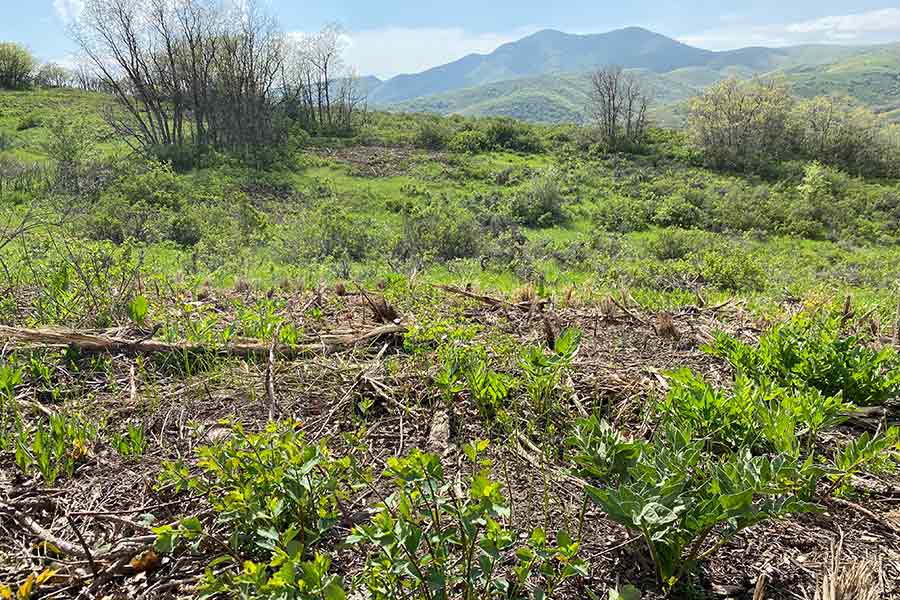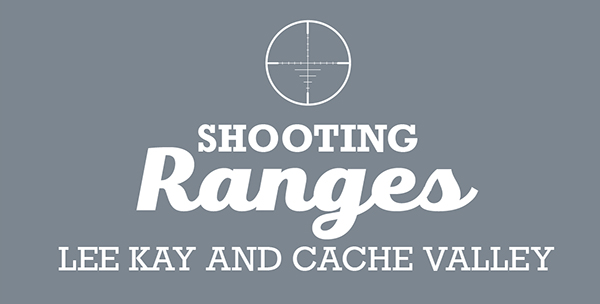Cooperation among agencies aims to better prepare forested areas of the Wasatch Front to withstand risk of wildfire
Salt Lake City — The summer of 2024 will be the third year in which several agencies partner together to perform forest health treatments in areas at risk of high-intensity wildfires. Prescribed treatments have been carefully designed to improve forest health after extensive evaluation and planning. Treatments will include tree thinning, mastication (or mulching excess vegetation), and prescribed fire and will take place in the Parleys Canyon area.
The work to harden forested areas to catastrophic wildfire risk is critical in the Mountain West, where unhealthy vegetation has escalated. Years of extensive drought have strained forested landscapes, which increase their vulnerability to disease and parasites. Fire suppression efforts to eliminate catastrophic wildfires over the last century are to be applauded for increasing community safety but have likewise contributed to hazardous accumulations of debris, decayed plant material, and other organic, flammable materials. This accumulation has resulted in an increased likelihood for high-intensity wildfires; a risk which fuel reduction projects, like this, seek to reduce.
Fuel reduction efforts within the Wasatch-Cache National Forest are a collaboration between United States Forest Service (USFS), Utah's Division of Forestry, Fire, and State Lands (FFSL), World Resources Institute, Utah Division of Wildlife Resources (DWR), Summit County, Utah's Public Lands Policy Coordinating Office, Park City Fire Department, South Summit Fire Department, and Salt Lake City Department of Public Utilities.
"This partnership has been critical in doing work across the landscape, regardless of landowner, to meaningfully reduce the risk catastrophic wildfires pose to values at risk. In our case, those values include the neighboring homes and communities, recreational opportunities, wildlife, and ecosystem health, as well as protecting critical watersheds," said Bekee Hotze, Salt Lake District Ranger for the Uinta-Wasatch-Cache National Forest.
"In addition to reducing the risk of catastrophic wildfires, this ongoing project will also benefit wildlife species in the area by creating a more diverse plant community, which will provide additional food and shelter for a variety of animals," DWR Habitat Restoration Biologist Robby Edgel said. "We are grateful for the many partnering agencies that help make this habitat restoration work possible."
"Protecting our watershed areas is a high priority for Salt Lake City," said Laura Briefer, Director of Salt Lake City Department of Public Utilities. "Salt Lake City's high-quality drinking water originates in the very areas which are threatened by high-intensity wildfires. Catastrophic wildfires have the potential to have a significant impact on the water supply we count on today and which is intended to serve generations to come. Improving forest health in our watershed areas is essential to ensuring our water supply."
Spencer Shaver, Save Our Canyons Executive Director, stated that "Save Our Canyons is proud to partner on a project working to reduce the risk of catastrophic wildfire in and around the Wasatch Mountains. Using science to inform the use of prescribed fire in our National Forests is one of the most important steps we can take today to protect our clean water, the flora and fauna of the Wasatch, and to reduce the risks to our community from catastrophic wildfire."
This watershed health project received funding through the state's Shared Stewardship agreement with the U.S. Department of Agriculture, funding from the Utah State Legislature through Utah's Watershed Restoration Initiative, and local conservation groups. Additionally, Salt Lake City Department of Public Utilities and Summit County partnered with World Resources Institute's Cities4Forests Initiative to secure a 2023 Innovative Finance for National Forests (IFNF) grant that will increase coordination and capacity critical to accomplish this work. To see a full list of funding sources, you can visit the Parleys Canyon Watershed Restoration project on the WRI database: https://wri.utah.gov/wri/project/title.html?id=6565.
Work begins in June, following a year of record snowpack and runoff, and is expected to continue throughout the summer. Those planning to enjoy recreational activities in the area should exercise caution and possibly seek out alternative sites in the area.

















